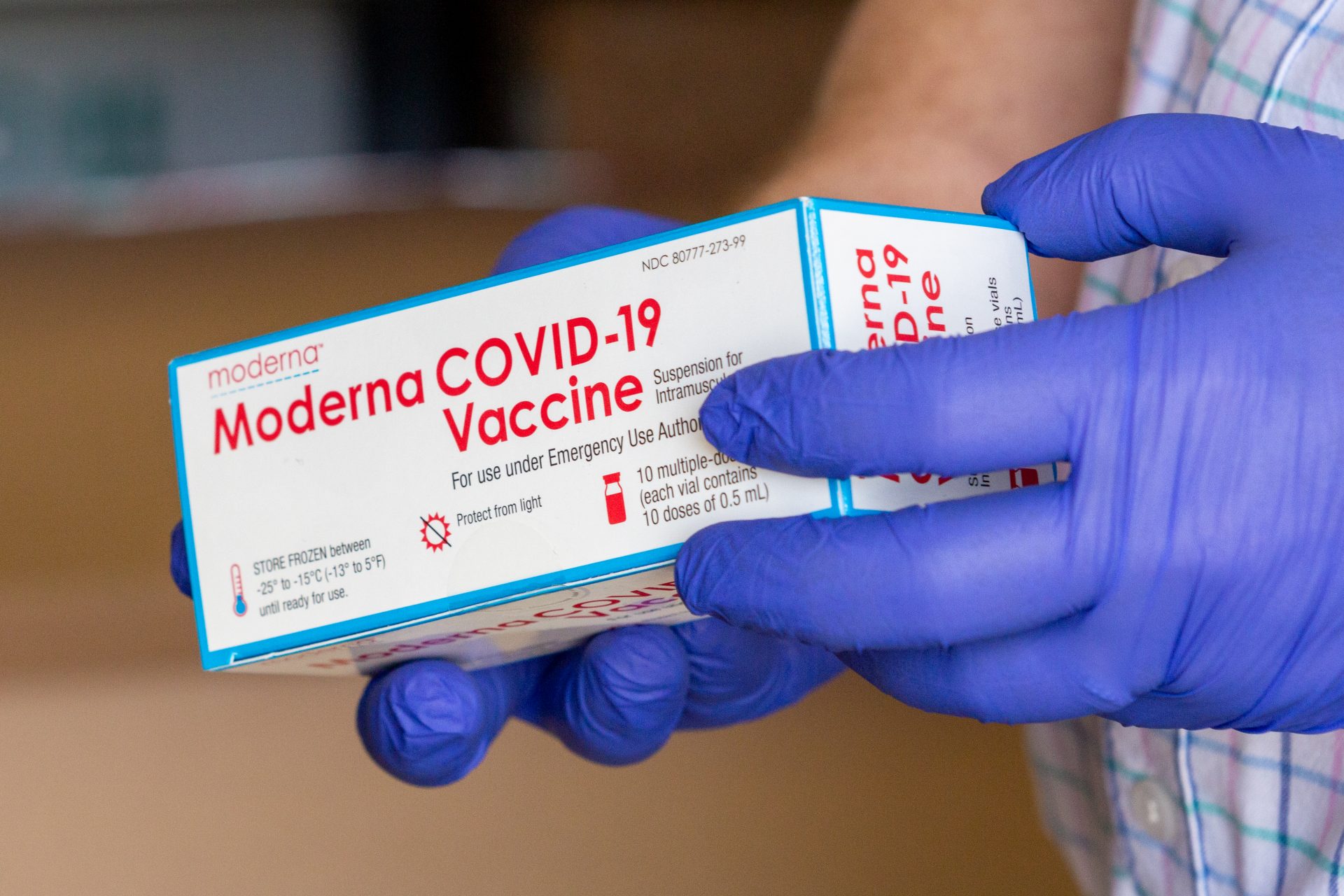
Oklahoma received its first shipment of Moderna vaccines on Dec. 21. Photo provided by the Oklahoma State Department of Health.


Oklahoma received its first shipment of Moderna vaccines on Dec. 21. Photo provided by the Oklahoma State Department of Health.
When the federal government kicked off Operation Warp Speed, the program to administer vaccines, it allowed states to build their own plans. These plans created priority groups, and then sorted those into phases. For example, Oklahoma’s frontline health care workers who treat COVID-19 patients became the first priority group, and composed Phase one. Phase two includes several groups, such as Oklahomans over the age of 65 and health workers not treating COVID-19.
Some states created hard lines between phases. Not Oklahoma. StateImpact Oklahoma’s Catherine Sweeney talked with Deputy Commissioner of Health Keith Reed, who is overseeing the vaccine program, about why our state is allowing its vaccine phases to overlap. Here are some snippets from the conversation.
Sweeney: It sounds like you all were leery of a strict phase plan from start. But you said that really took hold in December, when county health departments and regional offices started actually administering the shots.
Reed: I got reports back from regional directors around the state that say, hey, we did a clinic for our first responders today, for example… and we didn’t have enough people here to use up our supply. We’re wasting resources. I mean, that’s just an immediate trigger for us as a state. And we had discussions about do we move in lockstep moving forward in a very regimented manner through each one of these priority groups? And we just came to the decision that we can’t do that.
Sweeney: You said getting doses to communities at large would take too long if Oklahoma limited vaccines to just certain sectors at first, but really emphasized health workers.
Reed: Those are also kind of difficult groups to get through in an efficient manner.
Sweeney: What do you mean by that?
Reed: What I mean by that is think of your… think of your hospital workers, right? They work multiple shifts, they work in different locations within health systems. EMS drivers are not always affiliated with hospital systems. So while some large hospital systems around the metro areas … had the ability to store vaccine — keep in mind, we started with Pfizer that has the storage requirement. So we sent the vaccine to them and they were able to take care of their staff. But when you get into rural Oklahoma, you’ve got to … use our public health staff to go partner with their staff and get through. Those are not high output, high yield type of clinic settings. We very, very quickly realized that we had vaccine sitting in the freezers that we weren’t able to process through quick enough to get it into Oklahomans.
Sweeney: So obviously, waste is an issue. We’re seeing in New York — where phases aren’t allowed to overlap — they’re still on health workers, and won’t dispense the shots to anyone else. Hospitals are tossing doses because they can’t get them to people before they go bad.
Reed: Yeah, and by the way, we have instructed all of our vaccinators that under no circumstances are you to waste a dose. They are authorized to vaccinate outside of the priority groups if they get in the situation with doses about to expire.
Sweeney: Right, ok. So other than waste, why do we need to get through these doses so quickly?
Reed: We’ve got two things that we’re really trying to achieve. We’re trying to achieve personal protection through vaccination, at the individual level … But the other thing we have to do is we have to interrupt the transmission of COVID in the community, and I can’t do that if we’re not vaccinating people in the community.
Sweeney: And you’re getting these doses from the federal government, in this case Operation Warp Speed. I’ve heard agencies talk about federal funding before — if you’re going to ask the feds more money, you have to prove you need it. You have to make sure to spend what they are already giving you.
Reed: It’s the same kind of theory, if you want to prove you need more, you’ve got to utilize everything you have. And I can’t go back and negotiate with Operation Warp Speed for more vaccine unless I could demonstrate to them that we have a supply problem. Otherwise, they look and say, ‘Don’t come to us for more vaccine as long as you’re sitting on it in your freezers.’
In conclusion, Oklahoma is allowing its phases to overlap because it needs to get through the vaccine supply quickly. That will ensure more people are protected on an individual level, it will block more community transmission, and it will ensure Oklahoma can get larger shipments from the federal government.